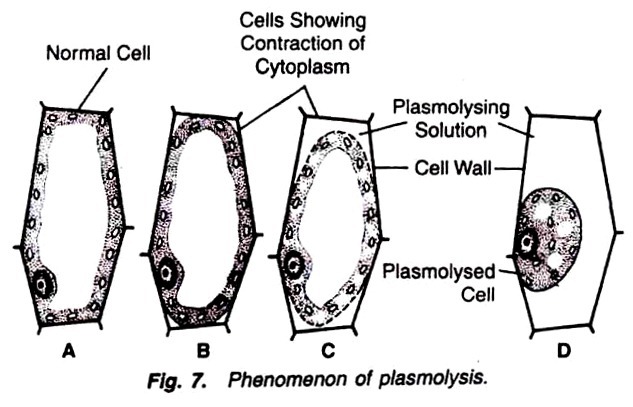ADVERTISEMENTS:
Object:
To demonstrate the phenomenon of plasmolysis.
Requirements:
ADVERTISEMENTS:
Tradescantia leaf, water, sugar solution, slides, cover glass, microscope, blade.
Method:
1. From the lower surface of the leaf of Tradescantia, peel off small segments of epidermis by a blade.
2. Put few peelings on a slide, mount in a drop of water, put a cover glass and study under microscope.
ADVERTISEMENTS:
3. Mount some of the peelings in the drops of sugar solutions of different concentrations. Study under the microscope.
Observations:
Peelings mounted in the water show clear cell structure. But the peelings placed in the sugar solution show the Concentra in their cell contents. More the concentration of sugar solution more is the contraction and shrinkage of cell contents. Peelings mounted in very high concentrated sugar solution, when observed under microscope, show complete shrinkage of their cell contents which become round or ball-like.
Results:
Shrinkage of the cell contents in the peelings mounted in conc. sugar solution is due to the fact that the osmotic pressure of the outer sugar solution is higher than that of the osmotic pressure of the cell sap. So the water from the cell sap diffuses into the external sugar solution through the semipermeable plasma membrane of the cell. Thus there is a shrinkage of the cell contents and this phenomenon is known as plasmolysis (Fig. 7).
If slightly plasmolysed (incipient plasmolysis.) cells are now kept in pure water, these will show the phenomenon of endosmosis and the cells will recover soon. This indicates the phenomenon of deplasmolysis.
